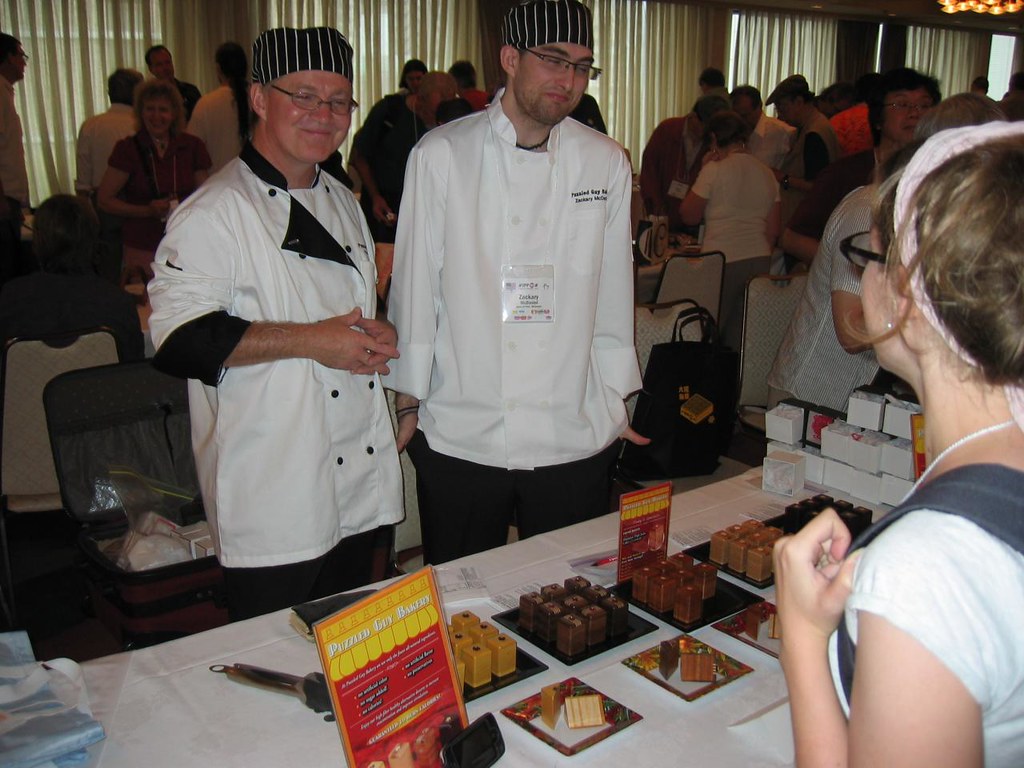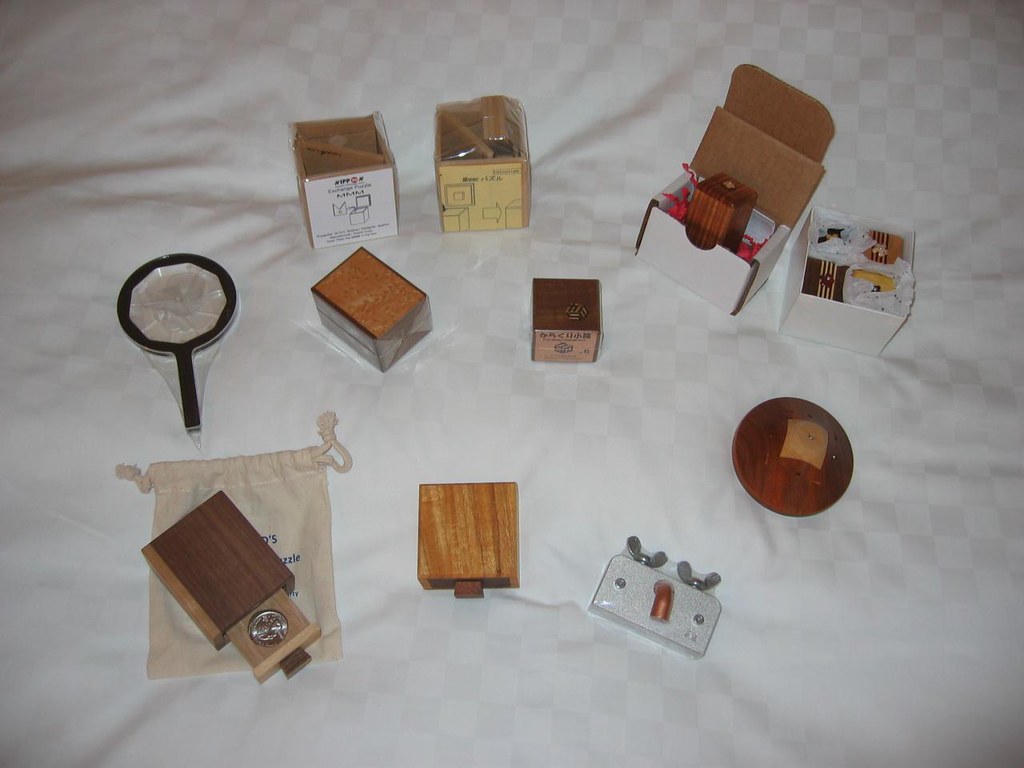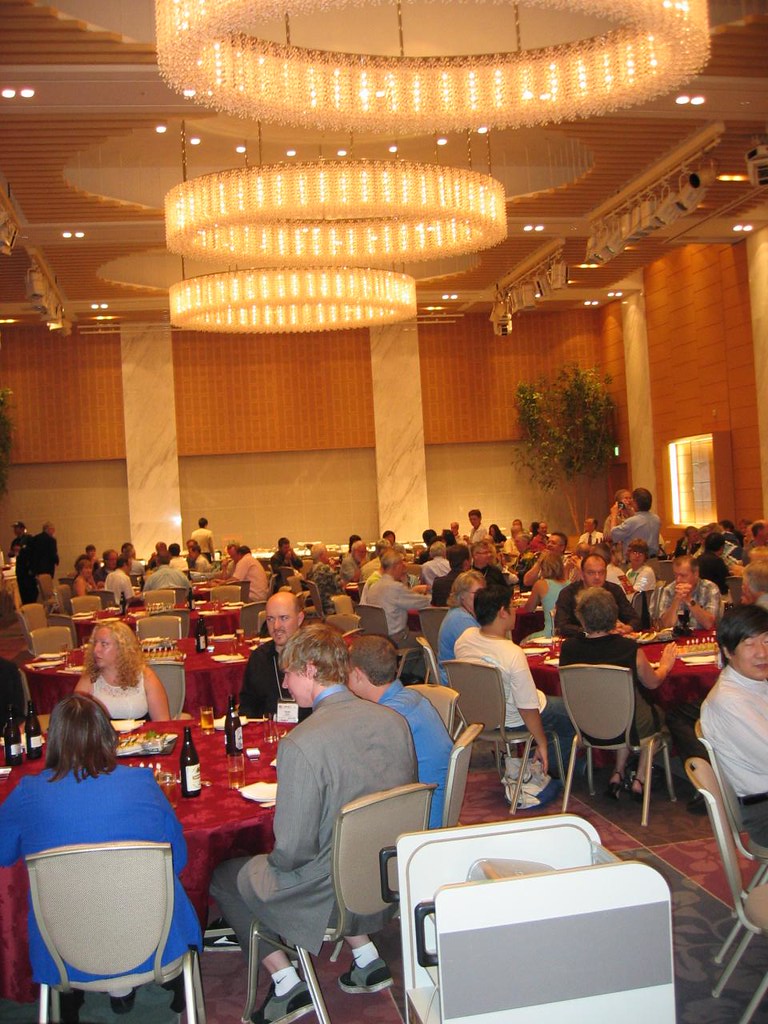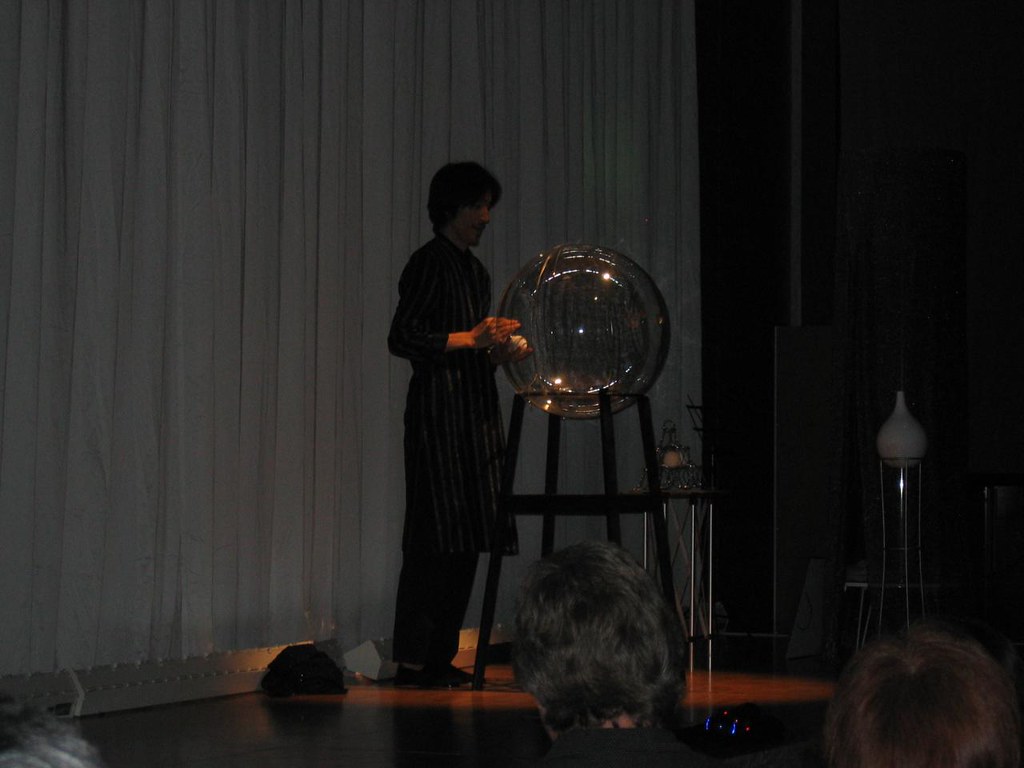Today was the day of the actual puzzle party, where people buy, sell, and trade puzzles. I had a whole bunch of stuff that I wanted to buy, so I made sure to get there right when the party started. There is sort of a mad dash at the beginning for the most popular puzzles, so you have to be quick to make sure you don't miss anything good.
The first thing I tried to buy was Secret Box, which was Rob Jones' exchange puzzle made by Iwahara of the Karakuri group. It is a beautiful puzzle box! He was in the middle of running around purchasing, so he said he'd hold one for me for when things calmed down.
Next I went by Robert Sandfield's table where I purchased this year's exchange puzzle, called Sandfield's Locked Drawer. Unlike most puzzle boxes, this one opens easily but is tricky to close. I solved the one that Matt got in the exchange yesterday and really enjoyed it.
After that, I went over to Perry McDaniel's table, where he was selling his series of Petite Fours puzzle boxes that are shaped like little cakes. He and his assistant were dressed up like chefs, which was pretty amusing, and the price list was set up like a menu. I purchased the full set of four puzzle from last year plus the new puzzle from this year.
As I mentioned yesterday, Pavel Curtis's puzzle looked interesting: it is a multi-layered puzzle where you need to arrange broken bits of lens in a magnifying glass shaped tray in order to unlock clues to a mystery. Pretty clever! I picked this one up as well.
I had been thinking of purchasing Dual Circle while I was back in the states, but $30 seemed a bit steep for what it was. There was a table that was selling them for half that price here, so I purchased it. It looked like an interesting sequential movement puzzle.
There was a table that was selling the full Karakuri Small Box series, so I purchased the one remaining box I was missing, #6. I also wanted to purchase the one Cube Box that I was missing (they are a set of four), but I forgot which number I was missing. Oh well!
Iwahiro Iwasawa was selling his MMMM puzzle which I wrote about a while ago and enjoyed, so I purchased that as well. He had also created another version called MMM which contains three modified M-shaped pieces rather than four, which was being exchanged by William Strijbos. I purchased one of these as well, hoping it would be as enjoyable as the previous version.
I was quite excited to find a single copy of Wasserhahn (Tap) by the mysterious "Roger" for sale and purchased that on the spot. I hesitated for a moment since it was fairly expensive, but this puzzle is quite hard to come by so I knew I would regret not purchasing it if I didn't. I'm looking forward to playing around with it: this series is quite difficult!
Phew, that's a lot of puzzles and a decent wad of cash. Here's a photo of all my loot, I didn't have time to take individual photos of all the puzzles:
Roughly left to right, top to bottom: "Get a Clue" by Pavel Curtis, MMMM and MMM by Iwahiro, five Petite Fours by Perry McDaniel, Secret Box by Iwahara (Rob Jones' exchange), Karakuri Small Box #6, Sandfield's Locked Drawer (Robert Sandfield's exchange), Sandfield's Unlocked Drawer, Wasserhahn (Tap) by Roger, and Fuji 1707 by Brian Young.
After the puzzle party, there was some down time, so I have been busy getting caught up on my blogging as you can see. (I'm probably not going to have an internet connection in Hakone, so this will be the last update for a while).
At 6:00, Kellian and I headed down to the banquet that marks our final night in Osaka. We sat at a table with all the other puzzlers who frequent RenegadePuzzlers who were in Japan: Matt Dawson, Phil Tomlinson and his son, Jim Strayer and his wife, Jeffrey Aurand, Stephen Chin, and George Bell. It was nice getting to hang out and chat with everybody, and the food was pretty tasty.
The two performances of the evening were good: there was a juggler who did some interesting manipulations that involved rolling balls inside a sphere and inside a tube. When rolled inside the tube, they seemed to defy gravity, which was quite interesting. The second performance used a number of props that folded in various ways and shifted between geometric shapes. It is hard to explain, but quite cool!
Tomorrow, we head over to Hakone, where the Karakuri Creation Group resides. I can hardly wait!


















































